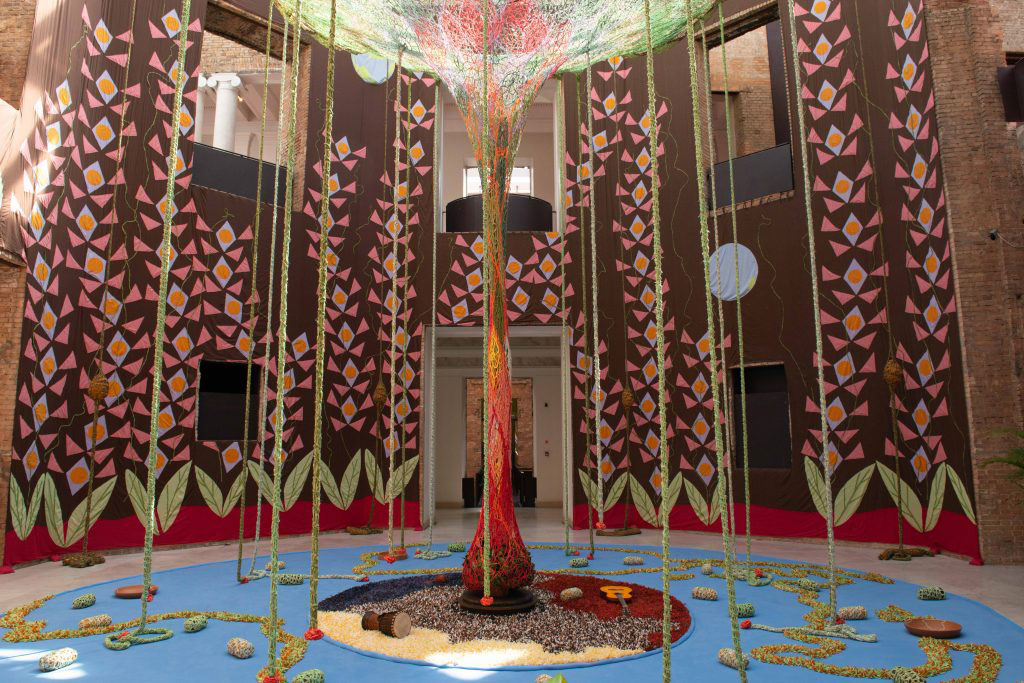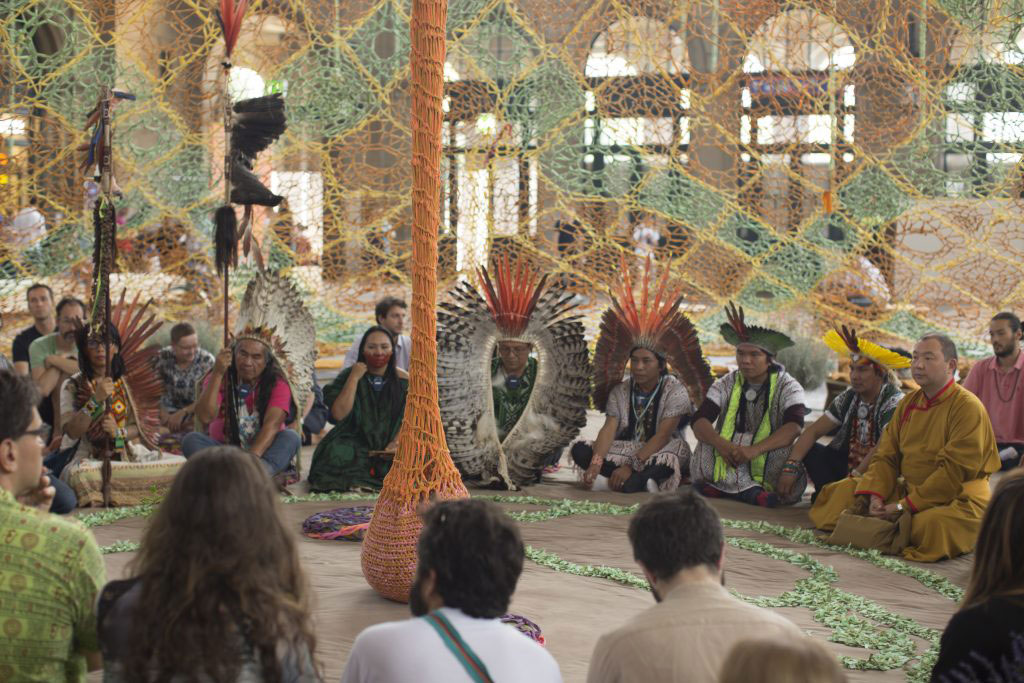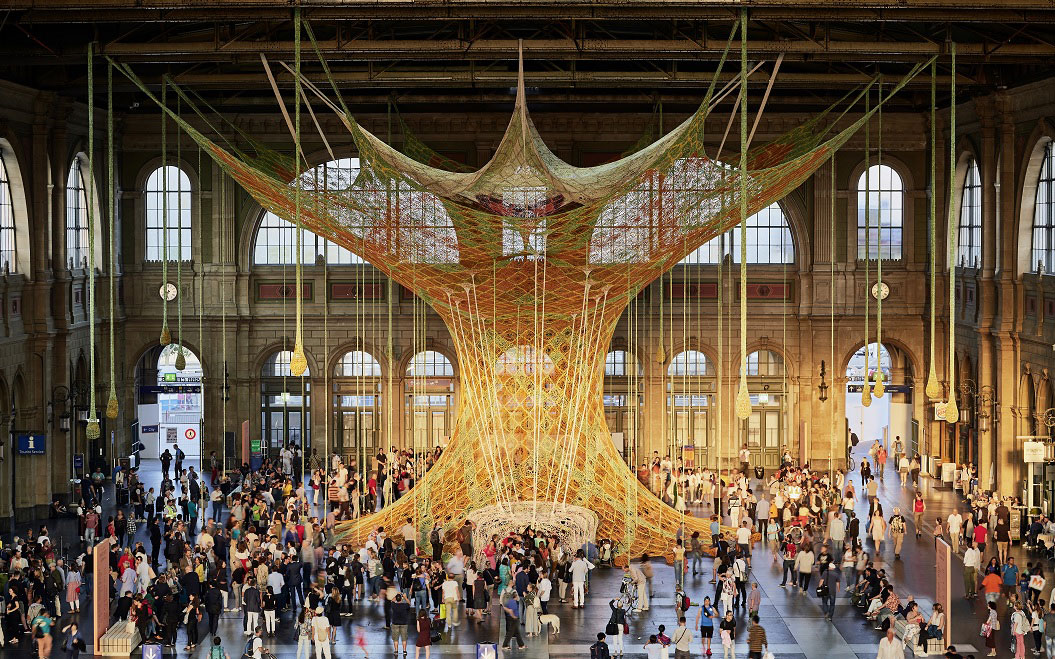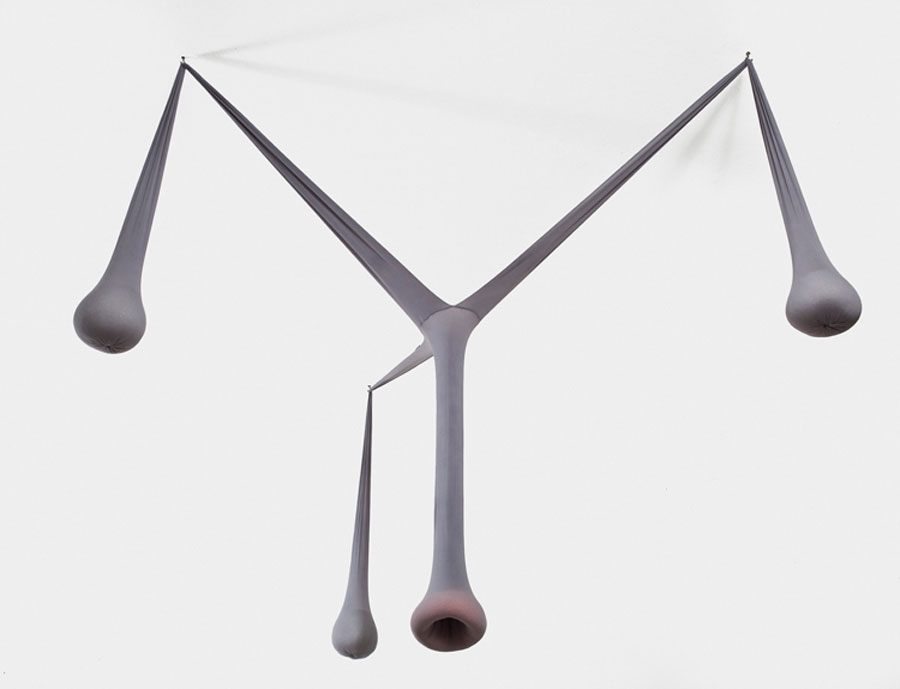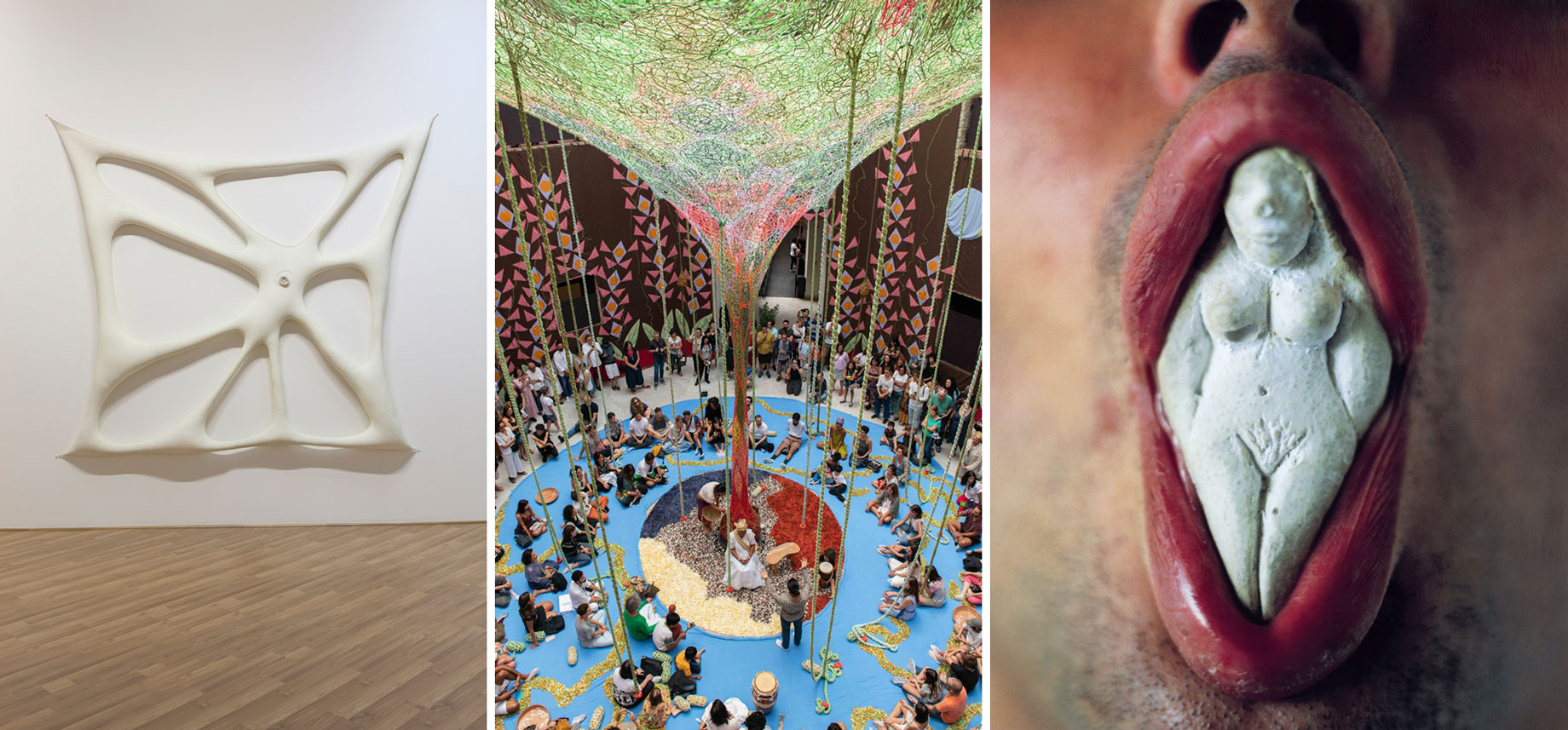ART-PRESENTATION: Ernesto Neto-Sopro
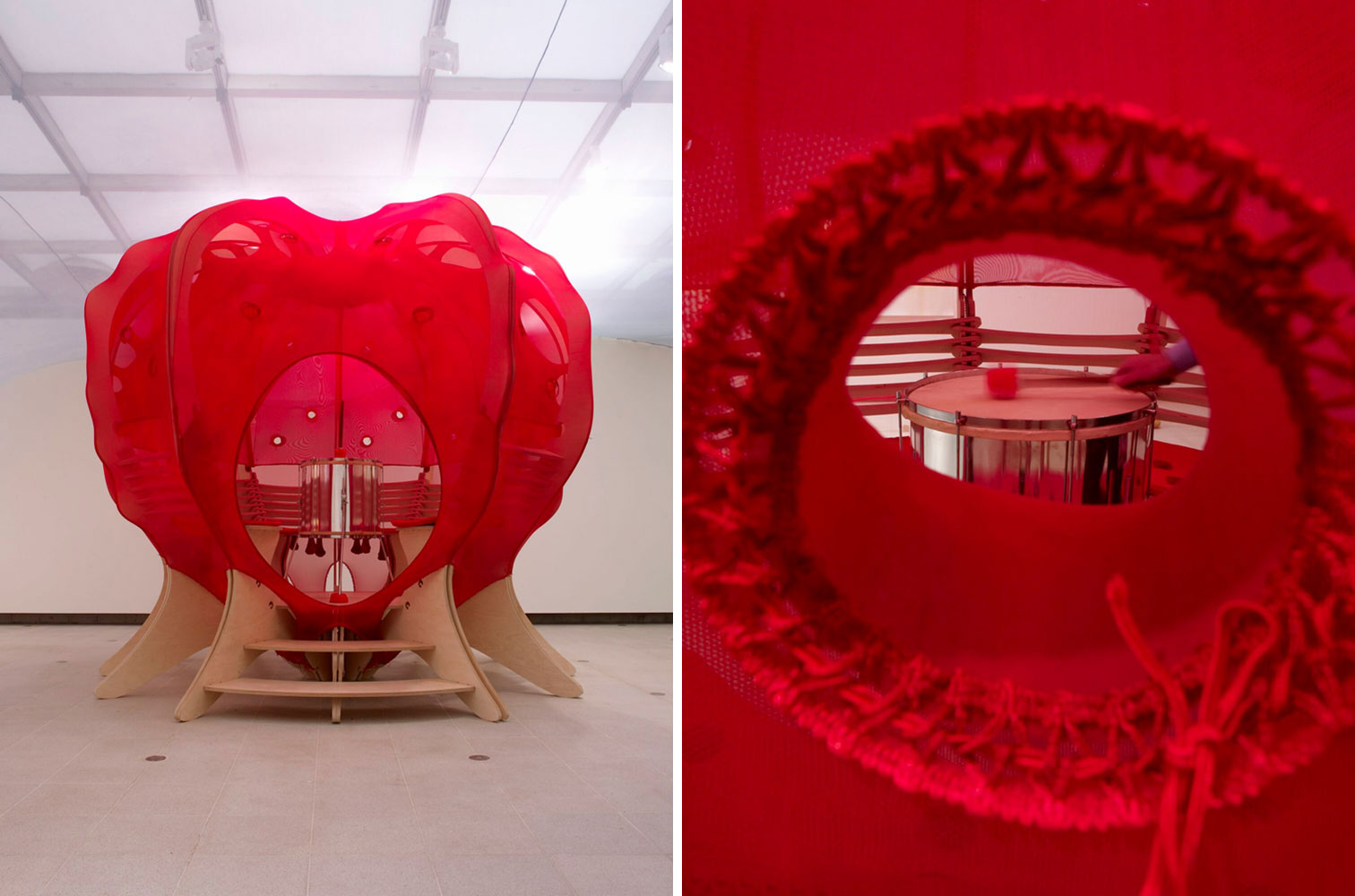 Through his formal vocabulary, Ernesto Neto engages with the idea of social interaction. Neto has gained acclaim for his large experimental environments that dramatically alter our surroundings, engage all the senses, and invite to interact. The deliberate choice of materials, the simultaneity of internal and external structures, the contrast between the organic and the mechanic, along with sensuality are all phenomena involved in his works.
Through his formal vocabulary, Ernesto Neto engages with the idea of social interaction. Neto has gained acclaim for his large experimental environments that dramatically alter our surroundings, engage all the senses, and invite to interact. The deliberate choice of materials, the simultaneity of internal and external structures, the contrast between the organic and the mechanic, along with sensuality are all phenomena involved in his works.
By Efi Michalarou
Photo: Fundación Malba Archive
The retrospective “Ernesto Neto. Sopro” at Fundación Malba in Buenos Aires brings together 60 works by one of the most prominent names in contemporary sculpture. Since the beginning of his career, in the 1980s, the artist has been producing a body of work that sets in motion a dialogue between the exhibition space and the various dimensions of the spectator. The exhibition proposes to demonstrate how physicality, the individual and the collective have always been present from the very start in the artist’s practice, shaping his poetics. His current collaboration with political and spiritual leaders of the Huni Kuin nations emerges as a natural consequence of his first sculptural research.
This is also the first exhibition that proposes to trace his first experimentations in this field through investigation and appropriation of the exhibition space until attaining his current social engagement. Today, at a time marked by a fundamental dissonance between man and nature, Neto proposes that art be a bridge for human reconnection with more subtle spheres. Among the group of works being shown is a seminal piece in his trajectory: “Copulônia” (1989). Made up of polyamide and lead spheres, its title is a reference to “copulation” (a term employed by the artist to characterize a type of element that is present in the work in which two parts penetrate each other) and to “colony” (a section of the work where the elements repeat themselves). “It conveys the idea of population, family, collective body and symbiotic coexistence” defines Neto. Ernesto Neto’s installations draw on the lessons of minimalist sculpture, New Brazilian Objectivity of the 1960’s and 70’s, and the anthropomorphic architecture, removing the visitor from the assault and grind of the everyday world and providing an opportunity to slow down and reconnect with essential multisensory experiences. Ernesto Neto studied at Rio’s Escola de artes visuais do Parque Lage in 1994 and again in 1997, as well as at the Museu de arte moderna de São Paulo from 1994 to 1996. Inspired by the Brazilian Conceptualists Lygia Clark and Hélio Oiticica, as well as Minimalism and Arte Povera, Neto brings a delicate and meditative sensuality to his sculptural landscapes, claiming the human body as an artistic site by encouraging participatory engagement. In 1997, Neto made his first “nave”, filling a cavernous space with hanging sheets of translucent fabric, the interior of which visitors were encouraged to walk through and touch. The use of nylon as a sculptural medium has remained a constant in his work, with subsequent installations growing large enough to accommodate tunnels, discrete rooms, and beds made of Styrofoam pellets. In 2006, Neto created the site-specific installation “Léviathan Thot” at the Panthéon in Paris. He stretched vast nylon sacks filled with Styrofoam from the dome to the floor, introducing a bodily dimension to its neoclassical architecture with his organic forms. The installation earned Neto the rank of Chevalier in the Ordre des Arts et des Lettres, in acknowledgment of his contribution to French culture. In 2015 the exhibition “Ernesto Neto and the Huni Kuin – Aru Kuxipa | Sacred Secret” at TBA21 conceived as his personal tribute to the Huni Kuin*, unfolding as a subtle parcours, which transitions from a space of preparation and initiation to the sacred area of ritual, to a room of study and knowledge, culminating in the community’s multiple voices of myths and songs. Here Neto mobilized a deep understanding of indigenous wisdom and tradition and the relational and perspectival nature of the Huni Kuin’s world vision. This shared journey marks a crucial extension of concerns that have been evident in his oeuvre over the past 20 years. Ernesto Neta in Zurich Main station created “GaiaMotherTree” (2018), a sculpture made of brightly colored hand-knotted cotton strips, resembles a tall tree, extending right up to the ceiling of the station concourse, which is twenty meters high. The work functions as a meeting place and a venue for interaction and meditation. A varied program of events for adults and children, with music, workshops, guided tours and talks, will take place inside the installation. “GaiaMotherTree” was made entirely by hand. Strips of cotton were colored with natural dyes, and then knotted together with a finger-crocheting technique to form a giant transparent structure.
*The Huni Kuin people, also known as “Kaxinawá” (bat-people) or “true people,” (from huni, “people”, and kuin meaning “true”), as they call themselves, live mostly in the Brazilian Amazon Basin, but their lands extend to the foot of the Andes in eastern Peru. The Huni Kuin are the largest indigenous population in the Brazilian state of Acre, currently living on twelve Indigenous reservations along seven different rivers: Purus, Envira, Murú, Humaitá, Tarauacá, Breu and Jordão. They had relatively late contact with the Western world, and despite decades of persecution during the rubber extraction years, they managed to maintain their traditional ways.
Info: Curators: Jochen Volz and Valeria Piccoli, Fundación Malba, Museo de Arte Latinoamericano de Buenos Aires, Av. Figueroa Alcorta 3415, Buenos Aires, Duration: 29/11/19-16/2/20, Days & Hours: Mom & Thu-Sun 12:00-20:00, Wed 12:00-21:00, https://malba.org.ar
